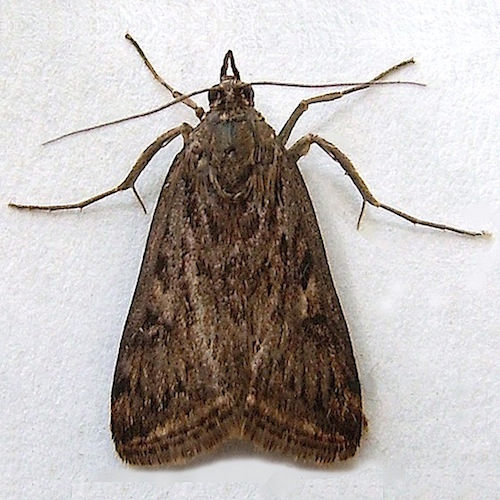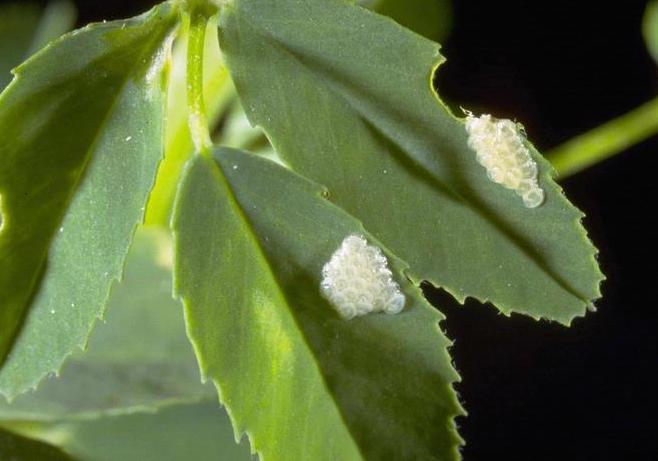Webworms
Two species of webworm occur on alfalfa in Kansas, and both will also attack soybeans, the garden webworm, Achyra rantalis, and the alfalfa webworm, Loxostege commixtali.
Alfalfa webworm
Loxostege commixtalis
|
Alfalfa webworm larva. (Whitney Cranshaw) |
Alfalfa webworm adult. (Jim Moore) |
|
Alfalfa webworm eggs. |
|
Garden webworm
Achyra rantalis

Garden webworm larva.
Larvae are slender, greenish, black-spotted caterpillars that produce significant amounts of webbing on the foliage. Later instars exhibit three dark spots on the side of each segment, each possessing one to three bristle-like hairs, and a light stripe that runs down the middle of the back. These insects overwinter as pupae in the soil. Pigweeds are a preferred host plant of the garden webworm and herbicide applications can sometimes force the movement of larva into adjacent fields. There are up to three generations annually in Kansas, and the first larvae can appear in early May, but it is larvae of the second generation that become abundant in July to mid-August that seriously damage the second or third cuttings of alfalfa, and may continue to cause damage through September. Skeletonized leaves covered with profuse webbing is symptomatic of an infestation. Early cutting of alfalfa will often eliminate the problem, but if the crop is more than two weeks from harvest, and 25 to 30 percent of the terminals exhibit webbing, an insecticide spray can be justified. Use sufficient gallonage and pressure to obtain thorough coverage and good penetration of the foliage.
Please refer to the most recent version of the Alfalfa Insect Management Guide for specific control alternatives.
Page last updated 4/18/2024 by J.P. Michaud.


